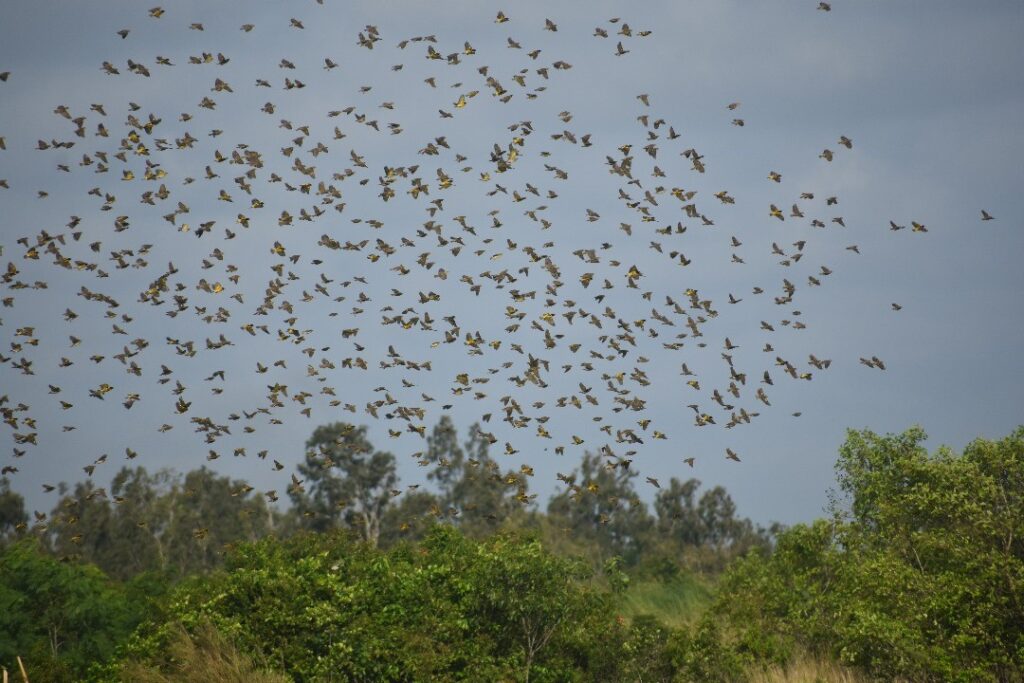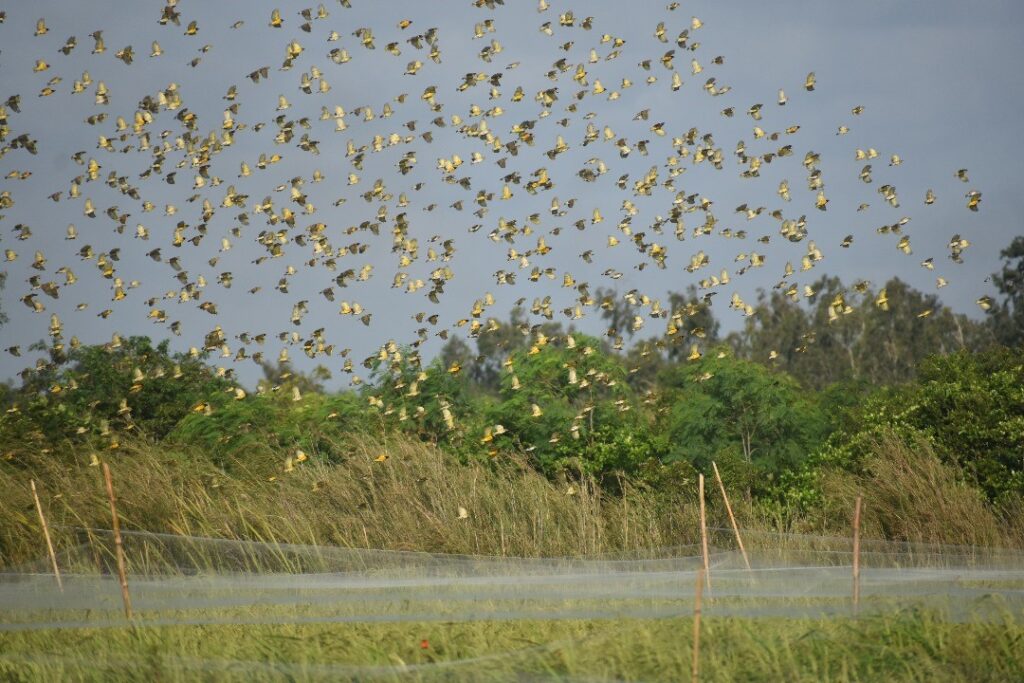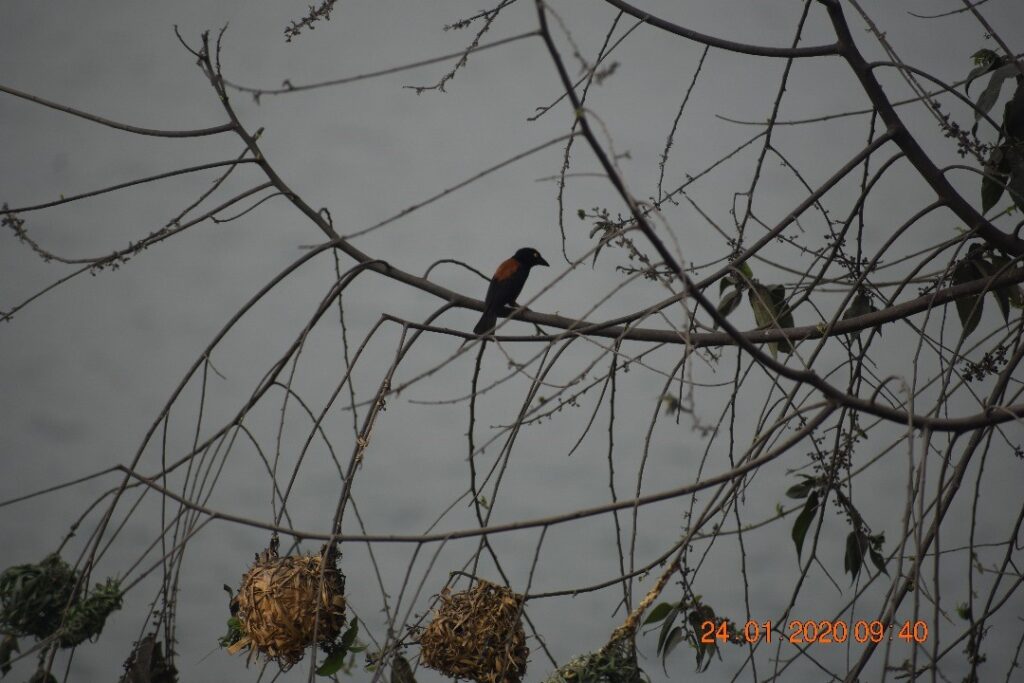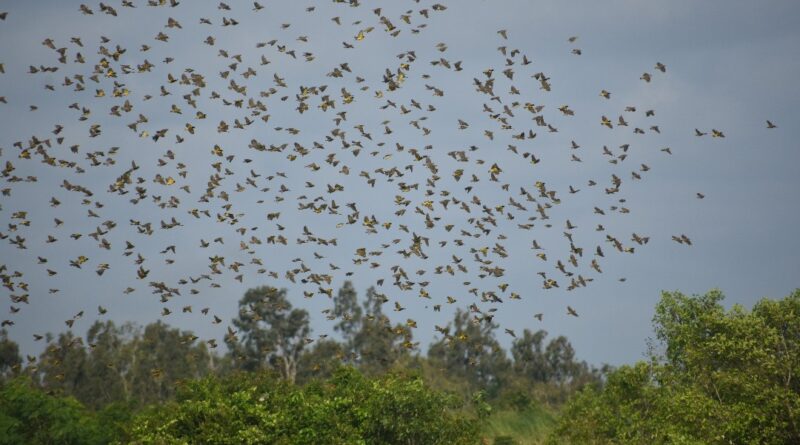Marauding Birds Invading Rice Fields Cause Economic loss to Farmers in Ghana
By Prof. Edward D. Wiafe, University of Environment and Sustainable Development, Somanya.

In the idyllic landscape of the Kpong Irrigation Scheme area, nestled at the lower reaches of Lake Volta in Ghana, a battle unfolds daily that pits the livelihoods of rice farmers against a winged adversary. The enemy? Birds. The stakes? Social and economic well-being. We ventured into this feathered fracas to uncover the species behind the rice raiding, its toll on farmers, and the measures deployed in defense.
Our expedition into this avian intrigue revealed that six bird species have established themselves as the notorious culprits of rice raiding: Village weaver (Ploceus cucullatus), Vieilloit’s black weaver (Ploceus nigerrimus), Pied manikin (Spermestes cucullatus), bronze manikins (Spermestes bicolor), red-headed quelea (Quelea erythrops), and white-faced whistling duck (Dendrocygna viduata). These winged marauders swoop down upon rice fields at various stages, turning the serene landscapes into battlegrounds of survival. The stages of attack range from the nursery through mature-milking fruit/grain stage to mature-hard dough stage.

For the beleaguered farmers, the battle never ends. Birds raid their rice fields throughout the day, with peak incursions occurring either in the morning or evening, depending on the bird species involved and the season. This relentless siege leaves farmers with no respite, as they must constantly devise strategies to protect their precious rice crops.
The toll taken by these feathered invaders extends far beyond just crop losses. The economic impact is profound, with an estimated loss ranging from 124.61 USD to 186.92 USD per farmer. These figures encompass the total overhead costs incurred in efforts to prevent bird raids. However, the unintended social costs are equally devastating. Absenteeism among schoolchildren rises as they are often needed in the fields to help fend off the feathery foes. Affected farmers find it challenging to participate in family, community, and other social gatherings, further straining the social fabric of these tight-knit communities.

Faced with this relentless avian menace, farmers have deployed various deterrent measures as their arsenal of defense. Yet, one method stands out as particularly effective – the use of small nets to cover rice fields. However, this silver bullet comes at a price, and many farmers find themselves unable to bear the cost of procuring these nets. Consequently, they are forced to rely on low-tech, low-cost, and non-lethal methods that, unfortunately, prove to be ineffective and environmentally harmful.
The battle against rice-raiding birds in Ghana’s Kpong Irrigation Scheme area is a vivid example of the complex interplay between agriculture, biodiversity, and community well-being. As farmers strive to protect their livelihoods, they navigate a delicate balance between the need for effective bird deterrents and the conservation of avian species. The story of this ongoing conflict reminds us that the challenges of sustainable agriculture are often as diverse as the natural world itself, and solutions must be crafted with the utmost care and consideration for both humans and our feathered co-inhabitants.


